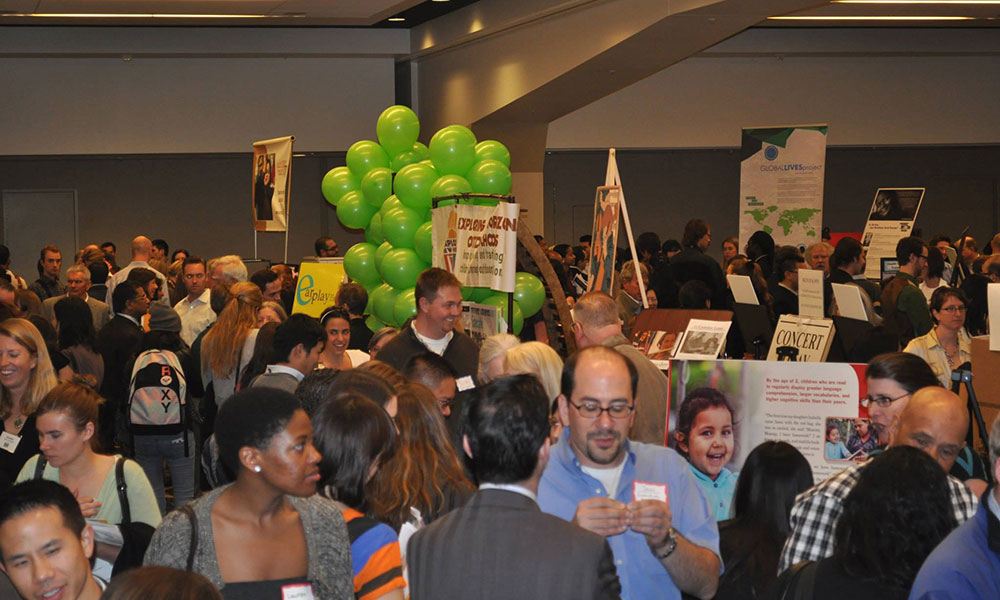
Should You Go “Speed Dating” for Board Members?
Board recruitment is still a struggle at associations. A recent event offers a lesson in the virtues of actively expanding your volunteer pool.
Earlier this month more than 150 organizations gathered in San Francisco to go hunting for board members. According to the San Francisco Business Journal, for the past nine years the Volunteer Center has been hosting the speed-dating-style event, where potential board members of charitable nonprofits can connect their skills with an organization that matches their interest. “It’s both a buy and a sell,” Tony DiStefano, executive director of Enterprise for High School Students, told the Journal.
The speed-dating concept isn’t directly transferable to the association space, of course. Associations typically have their own leadership ladders based on past experience on committees and special interest groups, and associations typically need expertise from within their industry. When many charitable nonprofits go looking for board members, they’re also looking for donors—and in the tech-soaked San Francisco Bay Area, hoping for affordable tech expertise.
The highest-performing boards are more likely to recruit new board members broadly.
But there’s something to be said for throwing open the doors a little when it comes to board recruitment. Associations, despite established processes and a focused understanding of what their board needs are, still struggle to find qualified board members. In part that’s because some associations don’t explicitly think through the process, despite evidence that doing so helps. In Associations Now, Beth Gazley summarized some of the findings from her ASAE Foundation book, What Makes High-Performing Boards. And recruitment is one of the things that makes for a high-performing board. Gazley writes:
[The highest-performing boards] were also more likely to recruit new board members broadly, by, for example, soliciting nominations from outside the board rather than depending on CEO nominations. They were more likely to screen prospective board members and to hold competitive elections rather than voting for a single slate. The result? Their CEOs were half as likely to report challenges finding board members who had the qualifications they needed and half as likely to report problems keeping the board members they wanted.
Gazley’s points speak to the virtue of developing a pool of board candidates, which is something that board-recruitment processes at associations tend to neglect. (Small wonder nearly 28 percent of association members say they’re very unlikely to do any volunteering at all.) So if it’s impractical to get a few dozen associations in a conference hall, invite the public, and see what happens, I can see the value in making the board experience more transparent to members. Too often, members are simply in the dark about what board experience involves, and the best candidates may not raise their hands because they’re carrying a false mythology about board work in their heads.
That’s something that Kevin McCray, CAE, executive director of the National Ground Water Association, discovered when it came to board recruitment: He found that many thought board members needed to be big donors in order to serve. To counter that, NGWA has hosted webinars and in-person events at meetings to give potential board members an opportunity to learn about what’s involved, and what they can gain themselves as business leaders for taking part. Remember that bit up top about this being both a buy and a sell?
It’s not speed dating, but it is relationship-building. And the more people you meet, the greater potential for a stronger board. As Nonprofit Quarterly‘s Jenny Jones pointed out in writing about the Volunteer Center event, “If your nonprofit has a strategy wherein it engages stakeholders in committees and otherwise, it will have a diverse, tested, and committed pool to draw from at all times.”
What has your association done to attract a broader range of volunteers and board members? Share your experiences in the comments.
The Volunteer Center's Board Match program, now in its ninth year, offers a speed-dating style approach for San Francisco nonprofits. (photo via the Volunteer Center's Facebook page)






Comments